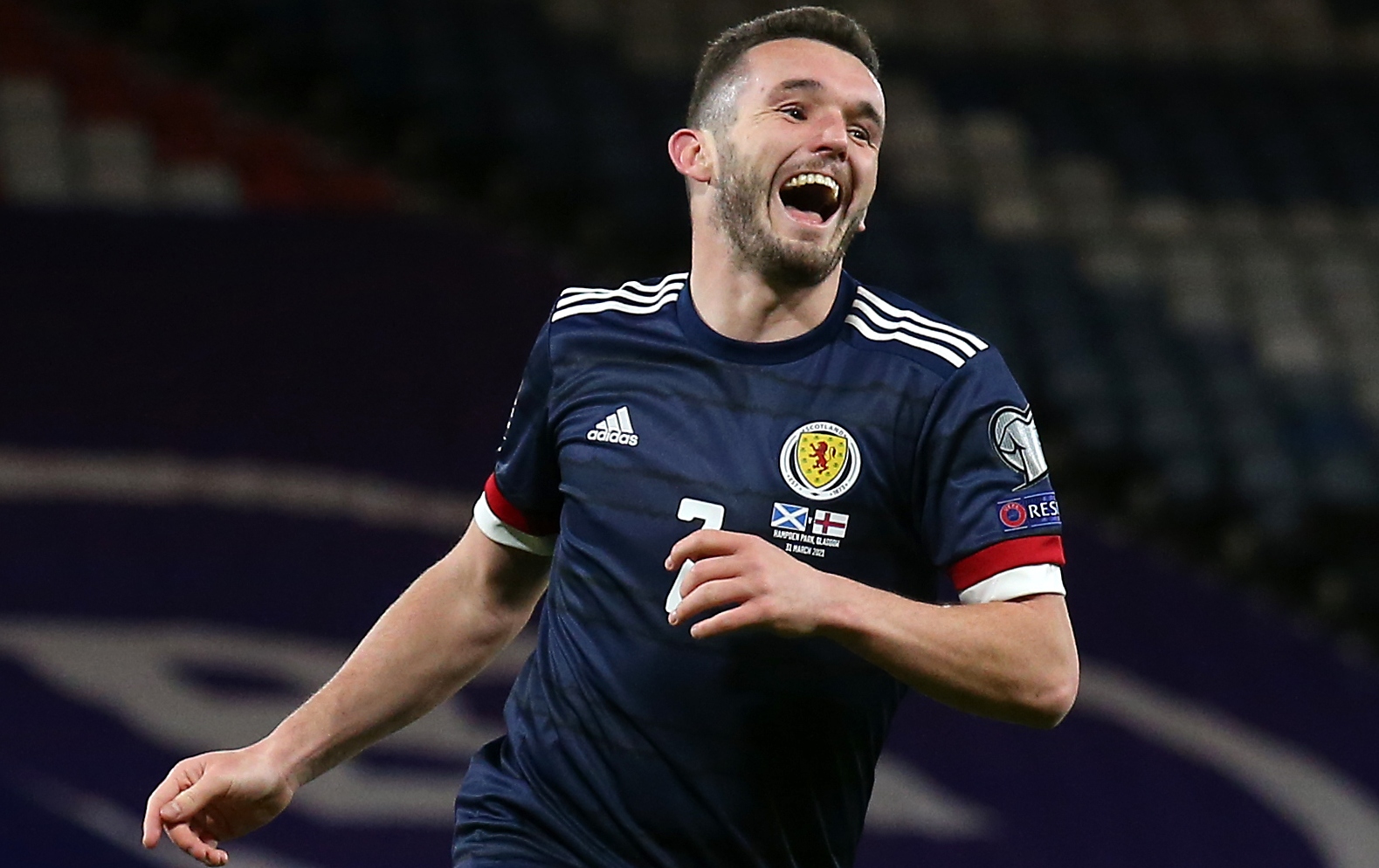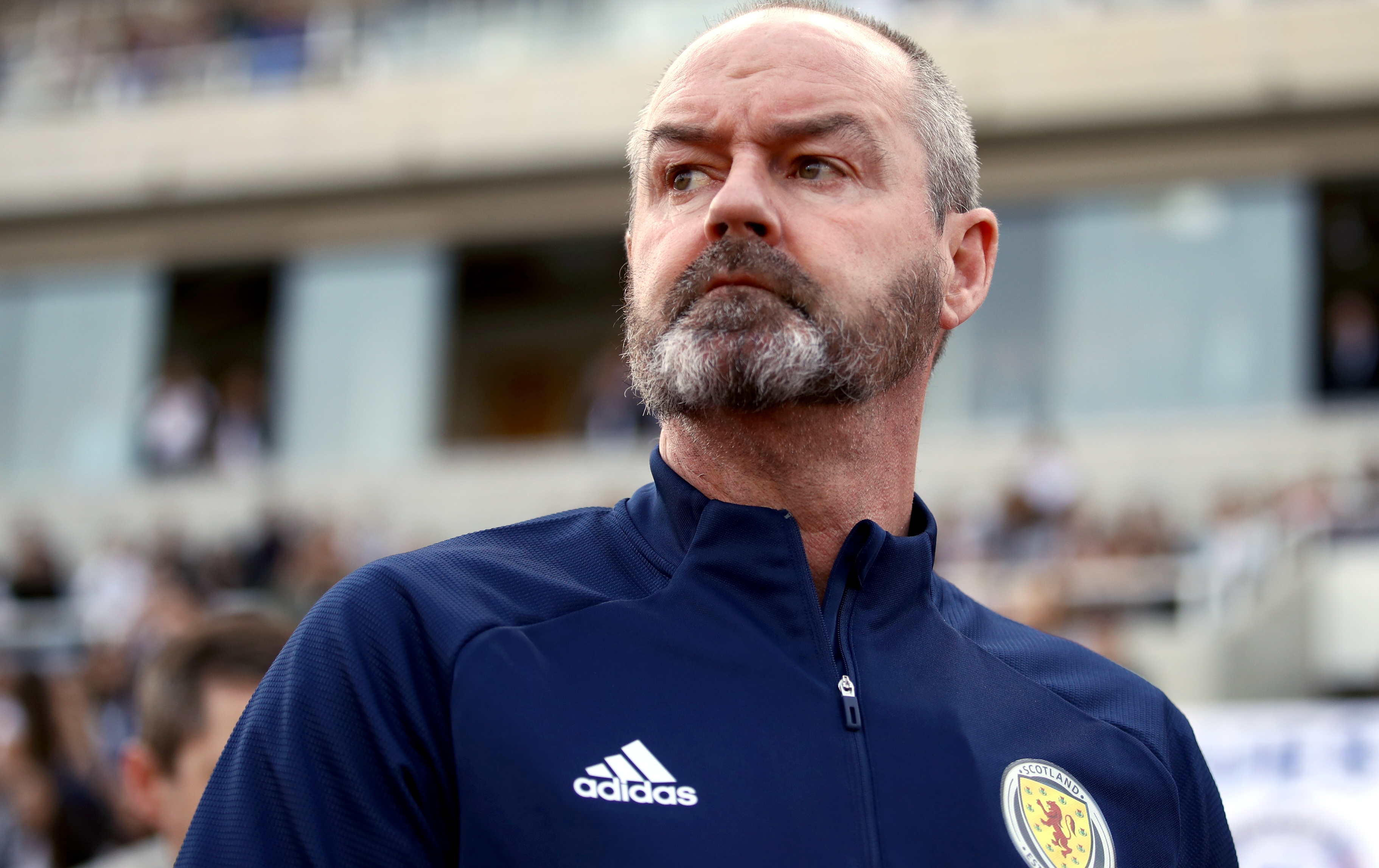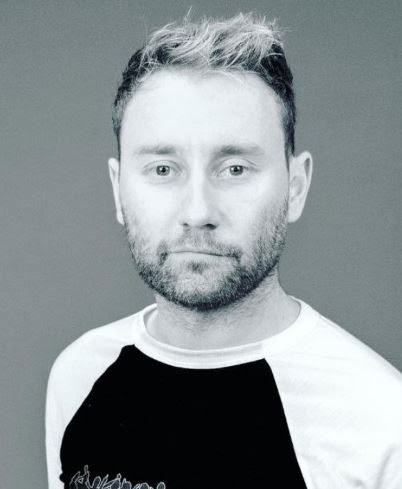John McGinn is the embodiment of a bolder, braver Scotland
Aston Villa’s midfielder has made a significant impact for Steve Clarke’s side – most crucially, during Scotland’s comeback win over Norway

When the final whistle sounded at Hampden Park, Scotland having just been eliminated from Euro 2020 at the hands of Croatia, Steve Clarke will have known what had gone wrong.
For all the scrutiny over tactics and systems, the one word he’ll have been repeating in his head will have been ‘bravery’.
After qualifying for a first major tournament in decades, his side mustered just one point and only scored a single goal. They had not looked overly outclassed against anyone, but equally hadn’t had the courage in their play to ever really take them on.
That wasn’t a total surprise. Qualification came via two play-off penalty shootouts, after netting just 16 goals in 10 qualifiers – only one more than Cyprus, with eight of their 16 coming against San Marino. Belgium scored 40 in the same group, Russia 33.
Today, this is a much braver Scotland side. At the heart of that is John McGinn – on and off the ball, determined to elevate this team way beyond their previous role of also-rans.
How Scotland have evolved

While the lack of goals was the issue to address, a solid defensive foundation has become the trademark of Clarke’s Scotland.
Recent results since qualifying for Euro 2024 haven’t been overly encouraging, but prior to that they conceded just eight goals in eight qualifiers – five of those coming in dead rubbers against Georgia and Norway.
Get FourFourTwo Newsletter
The best features, fun and footballing quizzes, straight to your inbox every week.
That record was as much in the concept as the execution, as Scotland play with an innovative pendulum system that sees them move from a defensive back five to an attacking back four – capable of making that change on both sides of the pitch.
The wing-backs, Aaron Hickey and Andy Robertson, play outside of centre-backs Ryan Porteous and Kieran Tierney. The former duo are comfortable pushing up as attacking wingers; the latter two can step in behind them as conventional full-backs.
That gives Scotland a perfectly balanced 3-4-2-1 out of possession, which becomes a 4-2-3-1 when the ball is won back.
It led to both of their goals in the victory over Spain, with their opponents unable to play either through or around their defensive shape and Robertson having a field day attacking the space in behind Pedro Porro.
McGinn's impact off the ball

In Scotland’s preferred 3-4-2-1, John McGinn tends to start as one of the two midfielders behind the forward, regardless of whether that central forward is Lyndon Dykes, Che Adams or Lawrence Shankland. Alongside McGinn, Bournemouth’s former Celtic man Ryan Christie often occupies the other spot behind the forward.
When defending, 29-year-old McGinn will look to lead the press on his side of the pitch, working in a triangle alongside the adjacent wing-back and central midfielder to pounce on any loose balls and then run directly into the space that’s provided.
It’s that aggression in winning the ball back which has really changed things for Scotland. McGinn’s reading of the game and dexterity in the tackle means the 5ft 10in midfielder is seldom chasing shadows and destabilising the shape of those behind him.
Across the eight qualifying matches for Euro 2024, he ranked in the top five per cent of all midfielders for the number of tackles won in the centre of the pitch. It’s a level of bite that Scotland were almost completely without last time around.
McGinn's impact on the ball
Unlike his position at Aston Villa, where he performs a horizontal role across the pitch, McGinn’s job when representing the national side is more vertical.
Without a prolific goalscorer, Scotland live or die by the contribution of the midfielders, and McGinn was second behind only Scott McTominay for both the number of goals and total shots for the team in qualifying.
Late on during the crucial 2-1 away win against Norway, Clarke entrusted McGinn with becoming the team’s main focal point, moving him centrally behind two forwards – he brilliantly found the room to create two vital goals.
For the equaliser, he pushed up against a retreating defence before dropping off to receive the ball between the lines. By finding a space the hosts weren’t covering, it caused confusion for Dykes to level.
For the winner, he broke into the penalty box to gamble on an overhit cross. Unmarked, he drew Kenny McLean’s defender towards him before firing the ball into the six-yard area, allowing a simple lay-off for the goal.
McGinn had been trusted by Clarke to make a difference – that courage from the manager might get Scotland into the business end of this tournament.
More Scotland stories
Scotland Euro 2024 squad: Steve Clarke's full team ahead of the tournament
Euro 2024 kits: Every home and away shirt announced or rumoured so far
Every Euro 2024 squad: All the teams previewed
Adam published his first article for FourFourTwo in 2015, but didn’t publish his second until seven years later in 2022. A figure that would put him near the top end of any ranking for Longest Time Between Appearances For One Club. In the time between he plied his trade as both a writer and presenter on YouTube, earning the dubious distinction of being “The James Milner of WhatCulture”. Be that because he was capable of playing any role, or just because it felt like he’d been around forever, depends on who you ask. He left FourFourTwo as a full time staff member in February 2025

